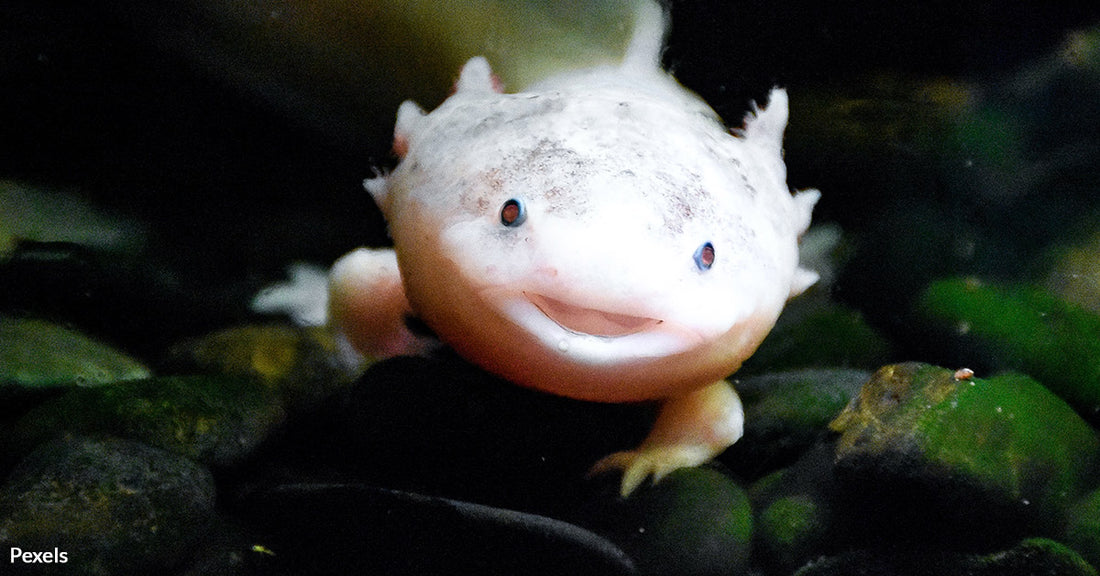Axolotl Conservation Efforts Intensify Amidst Rising Threats in Mexico City
Matthew Russell
The axolotl, a unique amphibian native to the waters of Mexico, now faces a grave threat to its existence.
Renowned for its extraordinary regenerative abilities and distinctive features, this creature has become a symbol of biological intrigue and cultural significance. However, alarming statistics reveal a dire situation: in less than two decades, the axolotl population in Lake Xochimilco, Mexico City, has plummeted by an astounding 99.5%,reports Common Dreams.
 Photo: Pexels
Photo: PexelsAxolotls are a type of salamander native to Mexico.
The AdoptAxolotl 2024 Campaign
In response to this critical situation, the National Autonomous University of Mexico (UNAM) initiated the "AdoptAxolotl 2024" campaign. This innovative program invites global participation in axolotl conservation through virtual adoptions.
As the Associated Press reports, participants contribute to the species' survival, while receiving updates on their adopted axolotl's well-being and supporting crucial conservation efforts.
The funds raised through the Adoptaxolotl campaign are vital for various conservation initiatives. These include habitat restoration in Xochimilco's ancient canals, captive breeding programs to bolster wild populations, and research to combat threats like urban pollution and invasive species, the AP reports.
 Photo: Pexels
Photo: PexelsUnlike most amphibians, axolotls spend their entire life in water.
Urbanization and Pollution: Silent Killers
The survival of the axolotl is under severe threat due to factors like urbanization and water pollution in Mexico City.
According to the San Diego Zoo Wildlife Alliance Library, the expansion of the city has led to significant degradation of Lake Xochimilco, the primary habitat of the axolotl. Pollution from various sources further compounds the problem, adversely affecting the water quality and the delicate ecosystem axolotls rely on.
Invasive Species: An Unforeseen Threat
Another significant challenge in axolotl conservation arises from invasive species, particularly carp and tilapia. Introduced in the 1970s and 1980s, these fish species have become a menace, preying on axolotl eggs and competing for food resources, reports Phys.org.
This introduction, initially aimed at reducing hunger and supporting new industries, has had unintended detrimental effects on the axolotl population.
 Photo: Pexels
Photo: PexelsAxolotls have a distinctive appearance with feathery external gills and a wide head.
Governmental Challenges: A Call for Support
As NPR reports, recent funding cuts to environmental initiatives by the Mexican government have posed additional challenges to axolotl conservation.
These reductions in support underscore the need for private and international contributions to sustain ongoing conservation efforts.
Science and Community Nexus
The fight to save the axolotl is not solely a scientific endeavor; it requires active community involvement.
Conservationists are collaborating with local farmers and residents to promote axolotl-friendly agricultural practices and improve water quality in the canals, Undark reports. Additionally, ecotourism and educational programs play a crucial role in raising awareness and garnering support for the species.
 Photo: Pexels
Photo: PexelsAxolotls are found naturally only in the lake complex of Xochimilco near Mexico City.
Cultural Significance and Scientific Potential
The axolotl is more than just an amphibian. As the AP reports, it is a cultural icon in Mexico and a subject of global scientific interest. Its unique regenerative abilities hold the promise of breakthroughs in medical research, including tissue repair and cancer treatment.
Preserving this species is thus not only a matter of biodiversity conservation but also of potential human benefit.
 Photo: Pexels
Photo: PexelsAxolotls are not good swimmers and prefer to walk along the bottom of their habitat.
A Shared Responsibility
The plight of the axolotl highlights the interconnectedness of our natural world and the impact of human activities on biodiversity. It is a stark reminder of our shared responsibility in preserving the planet's unique species.
"The axolotl is at critical risk of extinction," Luis Zambrano González, who works at the Biology Institute of Mexico's National Autonomous University (UNAM), told the UNAM Gazette. "For this reason we need to understand its conservation as something that all of society is responsible for, to care for its habitat and develop strategies to allow people to relate more to these animals."
Click below and take action for amazing axolotls!

